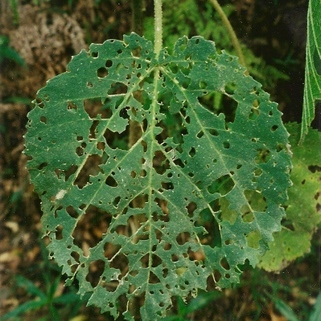A tall spreading tree. It grows 10-38 m high and spreads 5-15 m wide. The bark is grey and scaly. The timber is soft. The young parts are covered with stiff stinging hairs. The leaves are 15-30 cm long by 15-20 cm wide. They are broadly oval and pale green. There are teeth around the edge. The leaf stalks are 3-15 cm long. The flowering stalks are in the axils of leaves. The flowers are of one sex. Male and female flowers are on separate trees. The nut is 0.1-0.2 cm across. It is on a fleshy stalk. This is white or pink.


